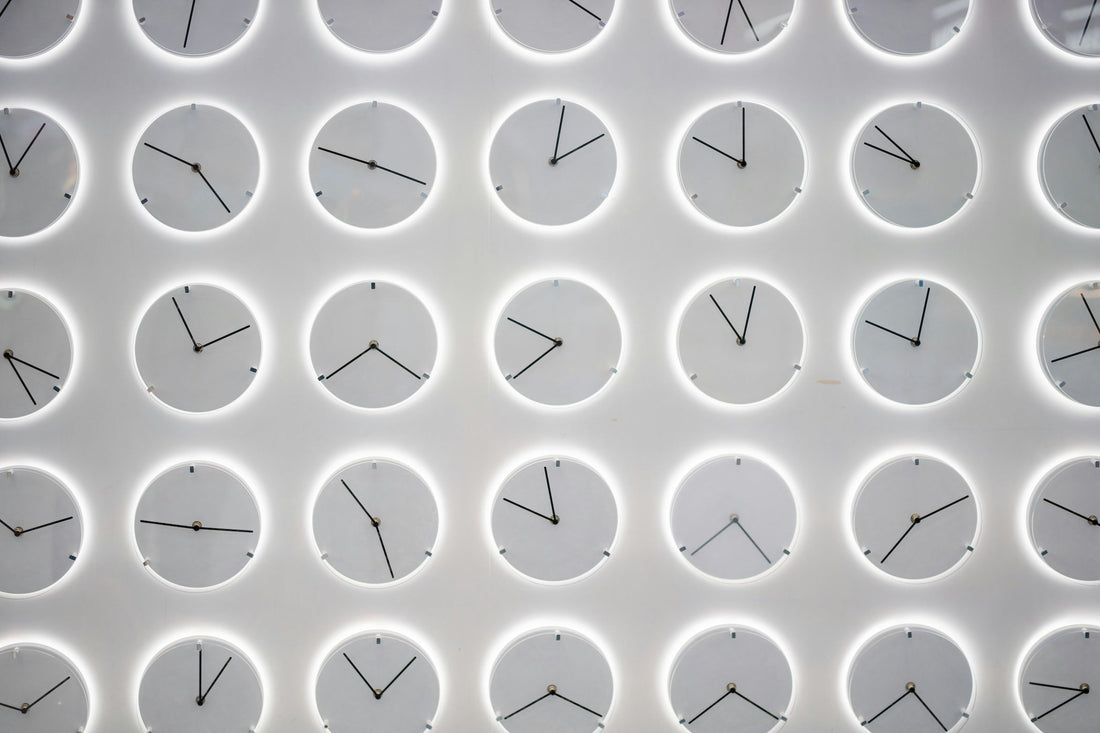
Why Coffee Tastes Different at Different Times of Day
Share
Have you ever noticed your morning coffee doesn’t taste the same in the afternoon? Even if it's the same roast, your body and senses are constantly shifting, so your flavor perception shifts too.
Time of day plays a major role in how coffee tastes. Hormones, hydration, and even mental focus all affect how your palate picks up different notes. Understanding these changes helps you choose the right coffee at the right time and make each cup more enjoyable.
Morning: Rich and Bold Wins
Right after you wake up, your body produces high levels of cortisol to help you feel alert. This hormone reduces your ability to detect flavor complexity. That’s why lighter, fruitier coffees often feel underwhelming in the early hours.
Medium or dark roasts work well here. Their rich chocolate, nutty, or caramel notes are more detectable when your taste buds are still warming up. Adding milk or oat milk can soften bitterness, especially if you’re sipping on an empty stomach.
We recommend a French press or drip brew for full body and a comforting start to the day.
Late Morning to Early Afternoon: Peak Flavor Time
As the morning wears on, your hormones level out and your hydration improves. This period, typically between 10 a.m. and 2 p.m., is the sweet spot for flavor clarity.
Your palate becomes more sensitive to subtle notes like fruit, florals, or acidity. This is the best time to try a single-origin light roast. Our Jam On, a natural processed Ethiopian, shines here with bright berry and citrus character.
Drink it warm, around 135 to 145 degrees Fahrenheit. This range highlights aromatic compounds while avoiding bitterness or flavor dullness from overheating.
Afternoon: Time to Ease In
By mid-afternoon, your energy begins to fade. Your body often craves comfort and balance rather than intensity. Acidity and sharpness might feel too aggressive during this time.
This is a great moment to transition into a lower-caffeine blend. One of our favorite mixes is 1 part Jam On to 2 parts Sidekick Decaf Coffee. It’s flavorful and rich without overstimulating your system.
Try brewing with an AeroPress or pour-over method to draw out smooth body and balance. You’ll enjoy depth without heaviness, especially if paired with a light snack like a cookie or piece of dark chocolate.
Evening: Smooth and Soothing
As the day winds down, your body prepares for rest. Drinking regular coffee too late can interfere with melatonin production and delay your ability to fall asleep.
Even if you still want to enjoy a cup, switching to decaf is a smart move. Our Sidekick is crafted using the Sugarcane method, which retains the origin flavor without harsh chemicals. It’s perfect for late-night sipping and tastes great on its own or with a mild baked good like banana bread or biscotti.
The Science Behind Flavor Timing
Your taste perception is influenced by more than your tongue. Circadian rhythms control hormone levels that affect how you experience food and drink. In the morning, high cortisol can mute subtleties. Later in the day, stabilized levels make your brain more receptive to nuanced flavors.
Hydration, food intake, and mental state also influence how you experience coffee. A well-hydrated mouth picks up brightness and floral notes more easily, while dryness dulls overall sensation. Fatigue may even shift your preference toward mellow, rounded profiles.
How Environment Affects Coffee Taste
It’s not just time that matters—your environment also shapes how your coffee tastes. Bright lighting can heighten your alertness and amplify acidity. Dim or moody lighting, on the other hand, tends to soften your perception of sharp notes.
Ambient noise, temperature, and even background scents can distract or enhance your ability to notice subtle flavors. If you’re tasting something delicate, choose a quiet, uncluttered space and take time with your sips.
Smart Coffee Timing Tips
- Early Morning: Choose comforting, medium-dark roasts with balanced body
- Late Morning: Try a complex, fruit-forward light roast
- Afternoon: Blend in decaf or use low caffeine options for smoother sipping
- Evening: Switch to decaf to support your natural sleep rhythm
Mini Tasting Challenge
Want to explore how coffee changes with the time of day? Try this:
- Brew the same coffee in the morning, midday, and evening.
- Use the same method and water ratio.
- Write down your tasting notes after each session: What’s different? What stands out?
This is a great way to deepen your appreciation for flavor and notice how your own senses shift naturally.
FAQ: Coffee and Time of Day
Does caffeine affect me more in the afternoon?
Yes. As your energy drops, your body may be more sensitive to stimulation. That’s why decaf or blended options often feel more comfortable later in the day.
Can I still enjoy light roasts in the morning?
Absolutely—but you might notice fewer nuances. Try pairing them with food or waiting until late morning to get the most from delicate notes.
Let Your Senses Guide You
Coffee is more than a routine. It’s a sensory ritual that interacts with your body's natural rhythm. By paying attention to how your perception changes during the day, you can create a more satisfying and intentional coffee experience.
Adjusting your roast, brew method, and caffeine level based on time of day is a simple but powerful way to get the most from every cup.
We’d love to see how you tailor your brew across the day. Tag us at @frequent.coffee and show us how you sip with the clock.
